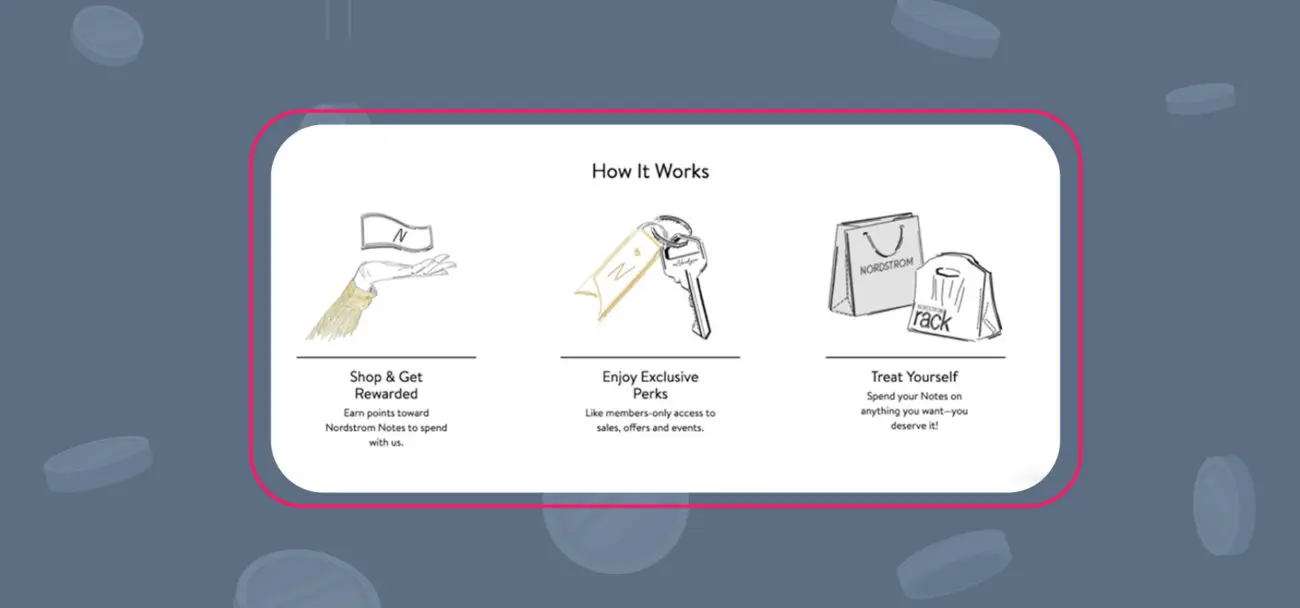Loyalty programs and reward initiatives are very popular amongst several industries, but most commonly used by airlines, credit card companies, supermarkets and drugstores. But, no matter the field, these policies have proved to be successful, becoming regular practice for most brands. Let’s discover why and how.
What’s up with loyalty schemes?
Loyalty schemes can create a feeling of belonging, a sense of brand community and, above all, make customers feel special. As a marketing tool, they are a great way to gather customer and purchase data, gaining insight on customer behavior and, consequently, helping to improve any ecommerce or retail operation.
Tapping into the exclusivity, perks and benefits that loyalty schemes can bring is extremely powerful and leads to great results in customer satisfaction scores, sales and brand growth. According to a research published in the Harvard Business Review, companies that encourage reward programs grow 2.5 times faster than their peers.
Whether it’s starting small with exclusive free shipping or going all out with swag kits and special rewards, VIP programs are more necessary than ever. During moments of crisis, having a devoted customer base is key as to not bring sales to a standstill.
Loyalty schemes for fashion customers
There are a lot of paths to take when constructing a loyalty program strategy, but the first thing is understanding how it applies to clients and what their expectations are when coming to an online store. Inside the fashion industry, there are various ways to encourage repeat purchases and build customer loyalty.
Different types of loyalty programs
There are several ways to offer rewards for customers, from regular points, contests, experiences and more. Usually, the best way to do so is mixing, matching and experimenting on what works better for your specific audience.
1. Earning points
This practice is the most commonly used by fashion companies. Known by industry experts as the “earn and burn” logic, customers win points by spending money, writing reviews, interacting with the brand in any way. Points can be exchanged for products, free shipping, small perks, samples, accessories and more.
This can also be a good tool to encourage customers to share data, subscribe to email marketing and, in general, be more open to what the brand has to offer in the future. By increasing points of contact with customers, there is a consequential increase in awareness and more people get involved in the sales funnel.
2. Gamification
Proposing a game to customers can make them more engaged, because it helps to fuel a competition streak where the price is having a higher rank, more rewards or just a general influence power within their favorite brand. Some companies use tiers and ranking to identify the best customers by making them complete tasks to eventually earn “Platinum” and “Diamond” titles.
3. Experience-based rewards
Being a loyalty program member should be memorable. Surprising customers with exclusive merchandise, early access, birthday perks and others is a good way to guarantee to the client that the company will always have the interest of those that are most engaged in mind. Other perks can include welcome gifts, free samples, access to new store openings, exclusive and high-end products.
Loyalty programs examples for the fashion industry
SHEIN: The loyalty scheme powerhouse
The Chinese fashion giant has an intricate system of how its customers can win points and spend them on the website. For every US dollar spent, clients get one point back — excluding shipping costs and insurance. All they have to do is confirm delivery on their account. This also gives the company information about delivery time or any kind of logistics insight that might be helpful.

SHEIN also heavily relies on the power of reviews. Reviews have transformed the online shopping experience, creating a network of trust and influencing the buying process. When posting reviews, customers get points.
By meeting the minimum text requirement, they receive five points. If the review includes a photograph, they receive ten points. And if it includes size information, an additional two points are added.
It doesn’t need to stop there. Check out other ways customers can earn points:
- Daily check-in. Customers gain points if they check into the site every day for seven consecutive days. If they miss one, they have to go back to the start.
- Live shopping. Points are given out randomly during streaming events.
- Contest participation. Clients may also earn points for participating in SHEIN contests, subject to rules.
Nordstrom: Reinventing and adapting
The multi-brand designer department store is well known by most Americans, with a significant history of rewarding the bearers of membership cards with exclusive points and other perks. Its program is called “The Nordy Club”.

After the COVID-19 pandemic, when the focus shifted online, it migrated the experience to the ecommerce channel by creating a profile and keeping track of all the members. With every purchase, members get a “Nordstrom Note” that they can use to redeem anything from products to a $20-off-discount to holiday party invites and exclusive VIP store events.
Several times a year, Nordstrom also hosts events where customers can earn bonus points or receive exclusive access to products and sales. The additional point days are both a great way to drive additional business and promote a loyalty program. These events, along with its other exclusive rewards, help set Nordstrom’s Fashion Rewards apart.
Building your own VIP customer experience
Building a loyalty program can be a challenge. You need people to adhere to the idea, be motivated to keep earning the points and perks, and also bring in friends and other people to the table as well. All of this while making financially-safe choices and not risking the health of your business.
Brand connection is a must
Brand essence is fundamental to get customers more engaged in your loyalty programs. If they already are familiar or identify with the brand’s purpose and ideas, it’s more likely they will want to join and help power the brand.
Rio de Janeiro-based brand FARM Rio, for instance, associates its loyalty program Clube FARM with one of its pillars of sustainability. In this program, you get points while shopping, early access to live events and, on top of it all, you help plant trees in the Amazon rainforest.
Use technology to your advantage
Technology can prove to be really useful when pushing loyalty programs for customers. Apps, wearables, QR codes and digital membership cards are just a few examples of how brands get closer to customers’ daily lives.
According to research from Bond, 95% of interviewees want to engage with this type of programs through new and emerging tech, including artificial intelligence, virtual reality and chatbots.
With a loyalty app, for instance, you can reach customers on-the-go while also using it to send push notifications about relevant deals, promotions and new campaigns. Some even use geolocation technology to send notifications out to customers who are near a physical store.
Be creative
At the end of the day, creativity is what will differentiate one loyalty program from another. Find out what works out for your customers, hear them out and see how your brand can fill in the gaps that they are missing.
There are a lot of opportunities out there and if you are not already thinking of ways to retain and increase your customer lifetime value, you are already falling behind.
